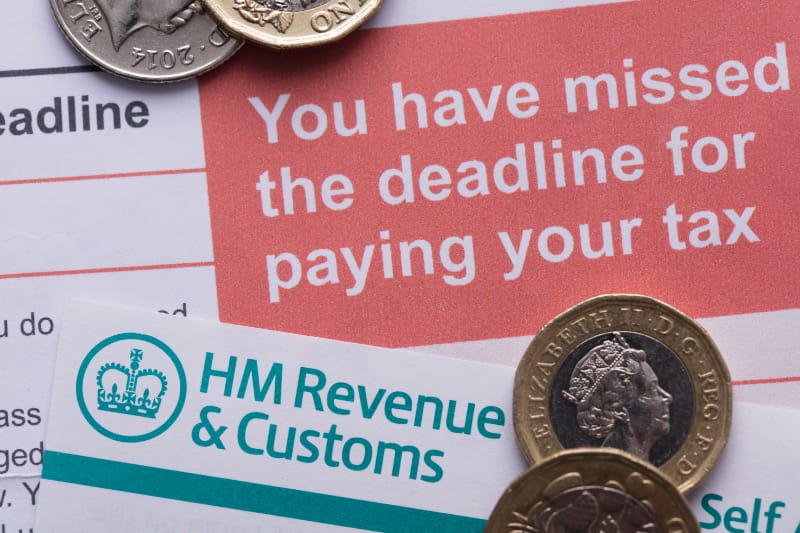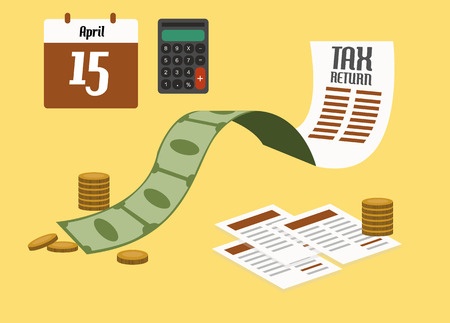The complete guide to buying a small business
Buying a small business can be a great opportunity or first step into the world of business without starting from scratch, but there are a few things you need to know before you seal the deal.

Every day in the UK, there are small business owners who are ready to retire or want to change focus, giving aspiring individuals a chance to buy an established business with an existing customer base.
Buying an existing small business is a serious investment. It comes with many benefits but it is not without risk. To prepare you for the journey, the small business accountants at TaxAgility aim to discuss the following issues in this article:
- Advantages of buying a small business
- Disadvantages of buying a small business
- Assessing your strengths and requirements
- Finding a business for sale
- Valuing a business
- Conducting due diligence
- Making an offer
- Signing a contract
Advantages of buying a small business
Buying an existing small business has many benefits, particularly if it has been well-managed. In general, the benefits include:
- It is easier to secure finance when buying an established small business as lenders see less risk in existing businesses which have already generated income versus start-ups.
- An existing business tends to have a healthy customer base and strong relationships with suppliers, along with equipment, stock, a working website and even intellectual property.
- It is highly likely the existing business has staff with experience that they can share them with the new owner.
- As the business is not starting from scratch, it also means it has cash flow.
Disadvantages of buying a small business
- You will need to invest a significant sum of money to purchase an existing profitable small business. You will also need to spend on professional services including due diligence experts, lawyers and accountants.
- You will inherit any issues the business has, anything from old equipment or an outdated website to quality problems. You are likely to invest a lot more to fix these issues.
- The business situation may change, e.g the original owner might have purchased products from his family members at a discount and this situation is likely to change once you take over.
Assessing your strengths and requirements
Before you decide to buy a business, it is worth taking some time to assess your strengths and know what the business is likely to require of you. Ask yourself these questions:
- How much money are you ready to invest?
- Where will you get the money from? Our post titled "The complete guide to business funding" may make a good read.
- What are your goals?
- Do you have a preferred industry?
- Do you have a preferred business model?
- Are you mentally and physically prepared to work long hours to make the business succeed?
Finding a business for sale
Once you know that you are ready to purchase an existing small business, the next step is to visit a business broker and see what is available. Small business accountants like us may also help, as we work with businesses across London and our clients tend to let us know if they are planning to sell their business. Alternatively, you can find out from real estate agency listings, trade journals or even newspapers.
Research is key when you are looking to buy a small business. Our advice to aspiring individuals is not to take the seller’s word on everything that they say, but do your own research. Find out who their competitors are, talk to their customers and look through online reviews, talk to suppliers, research market trends, or even try out the business’s products or services.
Valuing a business
Nobody wants to overpay for a business, so it is important to find out what you are actually getting as part of the sale.
Generally, business experts value how much a business is worth based on its net worth (meaning the difference between its assets and liabilities), plus its potential to generate future earnings. In this day and age, factors such as a business’ social media reach may also be considered.
Conducting due diligence
In our opinion, due diligence is perhaps the most important process when you are ready to acquire an existing small business. Due diligence helps to give a true value of a business and identifies the associated risks.
Due diligence means you (the buyer) will investigate, test and verify the various claims made by the seller. Due diligence is done to protect the business interests of the investigating party, to ensure that claims are genuine, and to assess financial matters of the other party (such as assets, financial performances and pre-existing debts). To put it simply, due diligence is a way of ensuring that there are no nasty surprises waiting for you following the transaction.
Due diligence covers every business aspect including financial, taxes, intellectual property, licenses and permits, employees, employee benefits, environmental issues, material contracts, customer information, insurance, litigation, among others. Financial due diligence is best performed by Accountants, as it can cover anything from income statements, credit history, stock, to payment records.
Making an offer
If you are happy with the business and everything you have seen and reviewed thus far, it is time to make an offer. Unless the seller is desperate due to ill health or other factors, this negotiation process is likely to take a while so be patient.
Your offer should almost always be lower than the asking amount, then expect the seller to provide you with a counter-offer. Eventually, after many rounds of negotiation, you will either make an agreement by meeting at a middle ground, or either you or seller will decide not to go through with the purchase. One word of advice is, you should not get pulled past the value you can afford to pay.
Signing a contract
By now, you should have a solicitor working with you to draft up a purchase contract. It is increasingly common to include contingencies in the contract. For example, the purchase is subject to finance approval by a bank, or the contract bans the seller from opening a competing business in the same area for a period of time.
TaxAgility helps businesses get up and running in no time at all
At TaxAgility, our Accountants are small business specialists. We work with many small businesses in and around the London area to provide them with the expert advice they need to make good business decisions, along with accounting and tax services to keep their finances in check.
We work with small businesses at different stages of maturity from start-ups to long-established companies, including small businesses that have brand new owners in place. We provide vital consultancy services to potential buyers of small businesses – from business valuation to careful examination of financial records - to uncover any potential red flags buyers should know about before agreeing to a transaction.
After the deal is done, TaxAgility’s specialists can prepare annual business plans, provide forecasts, deliver projections and perform vital account management. We will also help sort out your tax situation, provide payroll services and offer VAT advice.
Our comprehensive service is tailored to suit the bespoke accountancy and financial needs of small business owners. To find out more about how we can help you as you look to take over a pre-existing small business, simply call us on 020 8108 0090 or use our online form to get in touch today.
This article was updated on 25/09/19.
If you liked this post, you might also enjoy:
- The complete guide to business funding
- Small Business: 5 ways to get new customers
- Five ways to improve your company’s cash flow
This post is intended to provide information of general interest about current business/ accounting issues. It should not replace professional advice tailored to your specific circumstances.
Five ideas for distributing a cash surplus

Managing your cash surplus is an important part of running your business as it can fund and spur growth. While it is an advantage, it requires careful planning, so read on to find out.
Cash surplus is a situation where the cash inflows exceeds the cash outflows. Once you have built up a cash surplus within your company, the very first thing you need to do is determine how much of your surplus is true free cash. Then, the next step is to consider how to best use your cash surplus.
At TaxAgility, we are London’s small business accountants helping SMEs managing their accounts and meeting financial obligations. We understand that many company directors want to build a strong cash surplus so they can adapt to market changes. With this in mind, we aim to discuss five effective ways to manage it.
1. Pay down debt
When the cash reserve is strong, the first thing most business owners tend to do is to pay down debt, particularly if you are serving a high-interest loan and you know that returns on short-term investment are not likely to be greater than the debt you have.
2. Create an investment portfolio
Cash surplus presents an investment opportunity, which will hopefully yield a greater return. There are several investment opportunities including but not limited to:
- Invest in growing your company – this can range from buying a new vehicle to assist your fulfilment process and make it more efficient, to hiring another sales person to generate more business.
- Invest in property – purchasing an office building may help to reduce your rent and at the same time, increase your asset portfolio. Alternatively, you can rent them out to earn income.
- Invest in stocks, shares, bonds or even other companies – the motivation here is to get good returns, thereby strengthening your cash reserve even further.
Before entering any of these investment options, you are advised to do your due diligence because investment is inherently risky. Moreover, careful consideration and planning should be given when assessing how much cash your business can invest.
3. Place it into high interest accounts and bonds
As investment is inherently risky, a risk-adverse approach is to put your cash surplus into high-interest accounts and bonds.
These high-interest accounts and bonds will lock up your cash for a decided period of time, meaning your cash is in a safe place while it earns you interest. However, the downside is that you will not be able to access your cash before the agreed term ends, unless you pay a steep withdrawal penalty. In other words, your funds will not be available (without penalty) in the event of an emergency.
Other things to consider are that bond prices can fluctuate and credit risk. Credit risk means the bond issuers may be unable to pay and default on their interest and principal repayment.
4. Distribute as dividends
In order to be tax efficient, company directors often choose to pay themselves a low salary and use dividends to make up the rest of their income. The reasons are:
- Dividends have a lower tax rate than salaries.
- Dividends are not subject to National Insurance contributions.
- You will enjoy a £2,000 dividend allowance.
So declaring all, or part, of your cash surplus as cash dividends is a simple and tax-efficient way to remove profits from your company and add it to your take-home pay.
However, if your total income (including your salary, any interest payments, and your dividends) exceeds the high rate threshold, you will have to pay additional tax on your dividends.
5. Fund a pension pot
Retirement planning is essential nowadays, as pension provides an income which will help to maintain a good standard of living when you retire.
Using cash surplus to fund a pension pot is an efficient way of moving cash away from your company, as contributions made during an accounting year will receive full corporation tax relief (certain restrictions will apply), and you will not be liable to pay National Insurance Contributions (NICs) on them. The downside, of course, is you won’t be able to access these funds until you retire.
Talk to TaxAgility about your cash surplus
At TaxAgility, we pride ourselves in helping small businesses across London with their accounting and tax matters. We also work with aspired business owners who want to grow their company sustainably. If you are thinking of using your cash surplus to invest and spur growth, our trusted independent business advisors are here to help and discuss your options objectively.
Give us a today on 020 8108 0090 or get in touch with us via our contact page to arrange a complimentary, no obligation meeting.
This article was updated on 18/09/19.
If you liked this post, you might also enjoy:
- The complete guide to business funding
- Small Business: 5 ways to get new customers
- Five ways to improve your company's cash flow
This post is intended to provide information of general interest about current business/ accounting issues. It should not replace professional advice tailored to your specific circumstances.
How to restart a dormant or dissolved company
 Changing the status of a company from dormant or dissolved to active should follow guidelines.
Changing the status of a company from dormant or dissolved to active should follow guidelines.
Dormant company
Let us start by discussing a dormant company – referring to a company that is still registered with Companies House but does not trade or receive income.
HMRC uses the term ‘dormant’ when a company does not pay corporate tax and when:
- It has stopped trading and has not received any income.
- It is a new limited company that has yet to start trading.
- It is an unincorporated association or club owning less than £100 Corporation Tax.
- It is a flat management company.
There are numerous reasons as to why directors and shareholders would want to keep their companies dormant. Some of these reasons include waiting for the market to change, holding fixed assets, taking a break from trading, or even wanting to protect the business name so that nobody else can use it.
If you are reading this article, there is a good chance that you own a dormant company and you are looking to restart it. So how do you do that? In this article, we aim to explain the process involved.
Restarting a dormant company
As HMRC oversees all company-related matters, you must inform HMRC within three months when your dormant company starts to trade or receive an income. Trading, in this case, includes the activities of buying, selling, renting property, advertising, employing someone or receiving interest.
The process also involves:
- Registering for Corporate Tax again with HMRC.
- Sending accounts to Companies House within nine months of your company’s year-end. It must be said that during the period in which your company remained dormant, you should have continued sending accounts to Companies House. Therefore, your company’s year-end will remain the same as it has always been.
- Paying any Corporate Tax due within nine months and one day of your company’s year-end. Conversely, your Corporate Tax period starts when you restart trading, so this is unrelated to previous accounting periods.
- Sending a complete Company Tax Return to HMRC within 12 months of your company’s year-end. Your Company Tax Return must include a copy of your statutory accounts. As with the first point, your company’s year-end will remain the same as it has always been.
In addition to the above tasks, you may also need to re-register for VAT if it is deemed necessary. As it is situation-based, it is best to give us a call and discuss your unique case. In addition, you will also need to restart your PAYE scheme if you choose to employ staff.
A common approach taken by company directors when they decide to restart a dormant company is to engage a trusted chartered accountant to help them with accounting and tax matters. At TaxAgility, we are small business accountants dedicated to helping small business owners and contractors across London. If your plan is to start trading again, give us a call on 020 8108 0090 and we will be glad to assist you.
Dissolved company
A dissolved company is a company that has been permanently removed from Companies House. This happens when the company directors choose to dissolve the company voluntarily, or when the company is forcibly struck off for not sending your accounts to Companies House.
To restore a company that has been struck off the register voluntarily requires a court order, applied by one of the following people:
- Any former director, member, creditor or liquidator,
- Any person who had a contractual relationship with the company or who had a potential legal claim against the company,
- Any person who had an interest in an asset (land or property) in which the company also had an interest, right or obligation,
- Any manager or trustee, acting on behalf of the employees’ pension fund of the company.
- Any other person who appears to the court to have an interest in the matter,
- Any person listed in Companies Act 2006 Section 1006(1) or 1007(2) and where the company was struck off the register under Section 1003.
As the court is likely to require the applicant to show evidence in supporting the court order, it is wise to consult a legal representative.
To restore a company that has been dissolved, because Companies House believes that it does not appear to be in operation, a former director or shareholder may apply to the registrar to have the company restored. This process is known as ‘administrative restoration’.
To apply for administrative restoration of your dissolved company, you will need to complete Form RT01 and send it to Companies House, along with the followings:
- A £100 cheque made payable to Companies House.
- Evidence to show that the company has delivered all documents necessary to bring the company up to date and paid any outstanding late filing penalties. If you need help with bringing your accounts up to date, contact one of our Accountants at 020 8108 0090 today.
- A waiver letter if the company had property or rights. This must be obtained from the relevant Crown representative.
When Companies House receives your application, the Registrar of Companies will take their time in deciding whether or not to restore your company.
If the registrar decides to restore, the restoration will take effect from the date they send the notice. But if the registrar decides not to restore the company, you may apply for a court order within 28 days.
TaxAgility can help get your company back up and running
At TaxAgility, we have years of experience in helping small business owners and contractors across London with their finance and tax matters. We understand that sometimes you may want to suspend the operation temporarily to focus on something else, and when the timing is right, you want to restart a dormant company or to restore a dissolved company. Either way, we are here to support you so your company will meet all of its statutory requirements.
Give us a call on 020 8108 0090 or get in touch with our online form today to begin.
If you liked this post, you might also like:
- The complete guide to business funding
- Small Business: 5 ways to get new customers
- Accounting tips for small businesses
This post is intended to provide information of general interest about current business/ accounting issues. It should not replace professional advice tailored to your specific circumstances.
How to Pay HMRC Online

If you are looking for payment information for HMRC, you'll find this below. However, before you pay, you must ensure you have your tax return completed correctly. If you don't, you may be liable to penalties and interest charges. Self Assessment tax returns can be more complicated that they seem and errors can be costly. Read on, to find out more on avoiding these problems and how TaxAgility can help.
Understanding the Self Assessment tax process, can often be a little confusing, especially where you have outstanding amounts of tax to pay as a small business owners or are self employed. This is an area TaxAgility can help you with. Lets’ first understand how problems arise.
According to HMRC, there are various scenarios which require you to file a Self Assessment tax return, and some of the common scenarios are:
- You are self-employed.
- You are a business partner, a director of a limited company.
- You have an investment income from investment, land, property or overseas which you need to pay tax on.
- You have made a capital gain.
- You are a trustee of someone who has passed away.
Most people mistakenly believe that HMRC will contact them and ask them to file a Self Assessment tax return. In reality, HMRC has made it very clear that it is your responsibility to declare taxable income and file a Self Assessment accordingly. The deadline to pay your Self Assessment tax bill is midnight 31 January for any tax you owe for the previous tax year (known as balancing payment) and your first payment on account. Another key date is 31 July for your second payment on account.
Unsure if you need to complete an SA100 Self Assessment tax return form? Checkout our full article that explains when you’ll likely need to complete an SA100.
If you have questions pertaining to your tax situation, contact one of our Accountants in Putney, or Richmond today. With years of experience helping small business owners, contractors and individuals in London to become tax efficient, we can help to take the stress of tax and Self Assessment away.
Understanding payments on account
If your last Self Assessment tax bill is more than £1,000 and you have not paid 80% of all the tax you owe, then you are required to make two payments a year to HMRC before 31 January and 31 July respectively.
Here is a simplified example:
Assuming your tax bill for the tax year 2021/22 was £5,000. Let’s say that you only paid £3,000. You paid HMRC twice, each time £1,500.
The amount you need to pay by midnight January 31st 2023 is now £4,000. The breakdown is as follows:
- The balancing payment of £2,000 (latest tax bill £5,000 minus previous tax payment of £3,000 that you had paid).
- £2,500 for the first payment of latest tax bill £5,000.
Then before 31 July, you will need to pay HMRC £2,500 – which is the remaining of your tax bill £5,000.
It is important to note that payments on account do not include anything you owe for capital gains or student loans (if you are self-employed). You will need to pay those in your ‘balancing payment’ on 31 January. This process is indeed complicated, hence it is best to work with a qualified and honest accountant who can assist you.
Don’t really understand your notice of coding letter or tax code? Here’s our article that explains all you need to know about your tax code.
Ways to pay HMRC
You can choose to pay your Self Assessment tax bill online or by telephone banking, by debit or corporate card online (not personal credit card), or CHAPS. If you have received a paying-in slip from HMRC, you can also choose to walk into a bank or a building society and make the payment. Alternatively, you can also choose to pay via BACS, Direct Debit or by check through the post.
We usually encourage our clients to make a payment online as it is efficient, particularly if you are a busy individual juggling multiple tasks or if you reside overseas.
HMRC has two accounts, one is called HMRC Cumbernauld and the other is called HMRC Shipley. If you are paying from the UK, you need the usual sort-code and account number for the respective accounts. If you are paying from an overseas account, you will need BIC and IBAN. Details as follows:
- HMRC Cumbernauld: Sort-code 08 32 10, Account Number 12001039
- HMRC Cumbernauld: BIC is BARCGB22 and IBAN is GB62BARC20114770297690
- HMRC Shipley: Sort-code 08 32 10, Account Number 12001020
- HMRC Shipley: BIC is BARCGB22 and IBAN is GB03BARC20114783977692
Regardless of the account you are paying into, you must include your 11-character payment reference number when making your payment. This is your 10-number long Unique Taxpayer Reference (UTR), followed by the letter K (for example, 1234567891K). It can also be found on the original payslip HMRC sent you when you opened your online account.
How to save money on your tax returns
There are many ways to become tax efficient. For example, in this “Tax planning tips for the self-employed ” post, we discuss five options – taking IR35 seriously, considering Flat Rate VAT, incorporating a limited liability company (and with that, you can split your income between salary and dividends, as well as claiming tax relief on legitimate expenses), taking advantage of Annual Investment Allowance, and submitting all the paperwork on time.
If you have heard about using personal allowance, capital gain tax allowance, pensions and ISAs to help with tax planning and would like to know more, then this post “Tax planning and your Personal Allowance” would make a great read.
If you are a working parent and would like to know how strategic family tax planning can benefit you, follow the link to this post “Tax planning for families”.
We are experienced tax accountants and we can help you
To speak with one of our experienced accountants to discuss your Self Assessment, tax matters and payments to HMRC, contact us today on 020 8108 0090 or get in touch with us via our contact page to arrange a complimentary, no obligation meeting.
This blog is a general summary. It should not replace professional advice tailored to your specific circumstance.
If you liked this post, you might also like:
- Tax planning tips for the self-employed
- Tax planning and your Personal Allowance
- Tax planning for families




